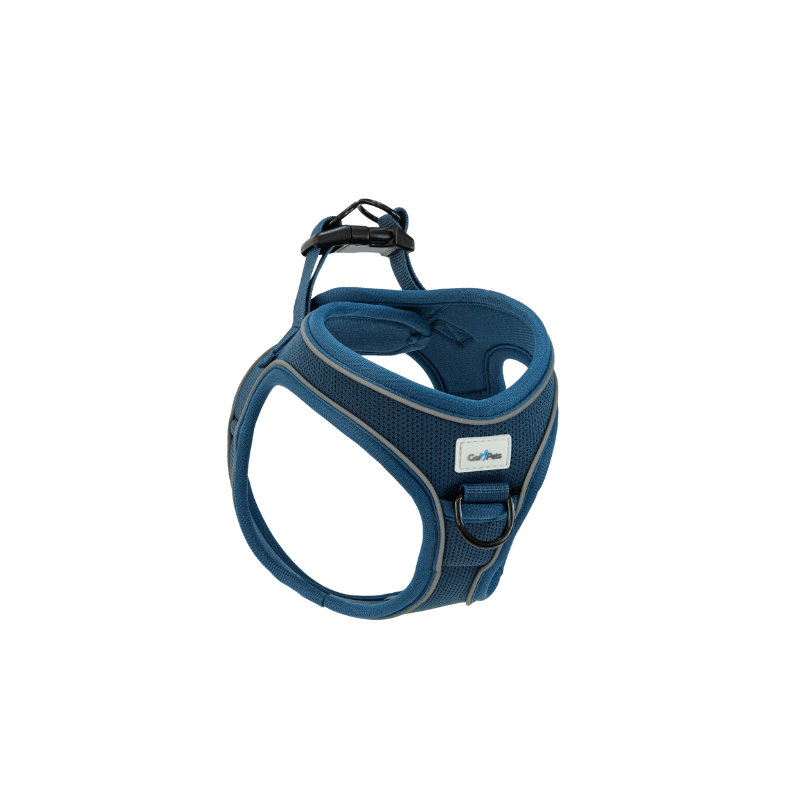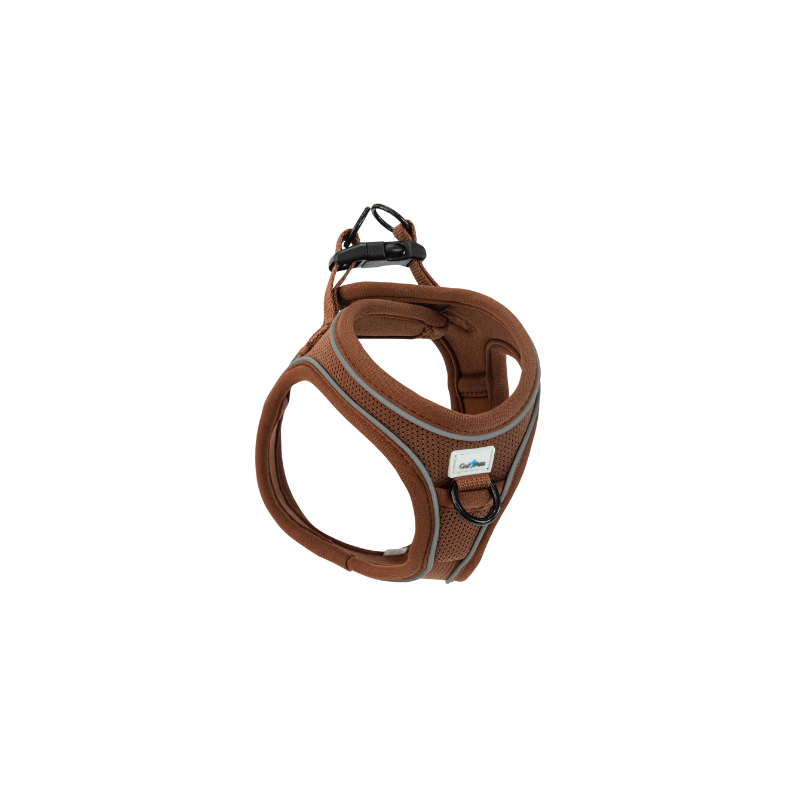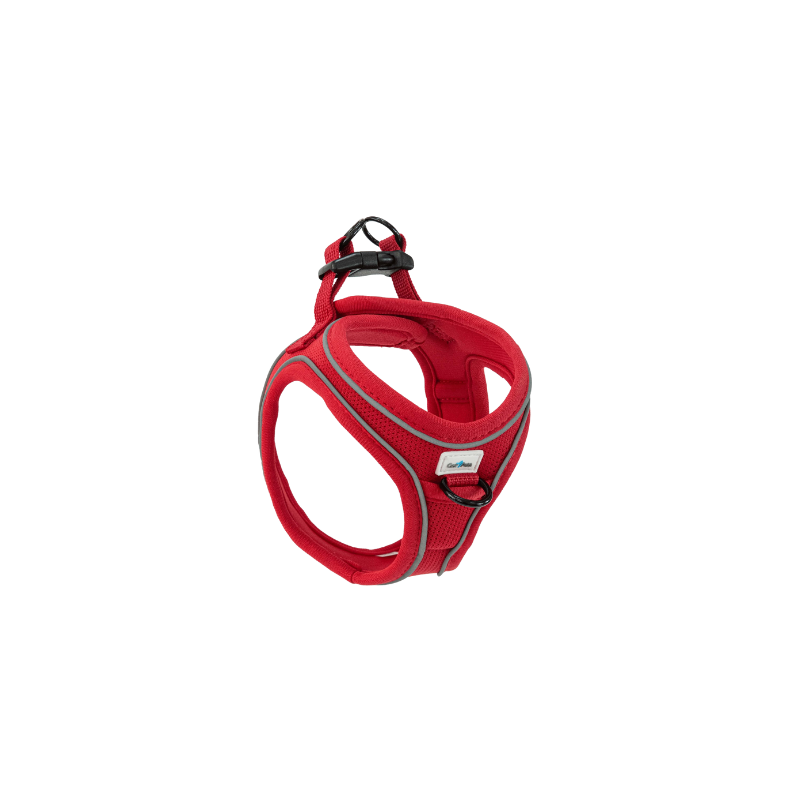Dog Harness

£13.99 – £18.99Price range: £13.99 through £18.99

£13.99 – £18.99Price range: £13.99 through £18.99

£13.99 – £18.99Price range: £13.99 through £18.99

£13.99 – £18.99Price range: £13.99 through £18.99
What Exactly Is a Dog Harness?
A dog harness is an item of equipment designed to secure your dog safely during walks. Instead of connecting the lead to a collar around the neck, the lead clips to a harness that twists around your dog’s chest and shoulders.
The primary objective? To give you far better control without placing unneeded strain on your neck. This is specifically vital for puppies still learning to walk well, breeds prone to respiratory issues (like pugs or bulldogs), or larger dogs with a great deal of pulling power.
Most harnesses are adjustable and come in a range of sizes–from small Chihuahuas to titan Great Danes– so every dog can delight in a safe and comfortable fit.
Why Choose a Harness Over a Collar?
Dog owners in the UK are significantly choosing harnesses over collars, and it’s not difficult to see why. Let’s break down the crucial benefits:
1 Better Control on Walks
Harnesses give you more take advantage of and control, especially if your dog often tends to pull or lunge. This can make a big difference when browsing busy streets, parks, or experiences with various other dogs.
2 Reduced Risk of Injury
Unlike collars that put pressure on the throat, a harness disperses pressure throughout the chest and shoulders. This decreases the risk of neck strain, coughing, or even more major injuries.
3 Great for Training
If you’re mentoring your dog not to pull, a front-clip harness can carefully reroute them back in the direction of you without triggering pain. It’s a helpful device for enhancing excellent lead good manners.
4. Comfort for Brachycephalic Breeds
Flat- dealt with breeds like French Bulldogs and Pugs often battle with collars due to their breathing issues. A well-fitted harness maintains them secure without making it harder to breath.
5. Escape-Proof Security
Some dogs are Houdinis when it comes to sliding out of collars. An effectively fitted harness makes it a lot harder for them to wriggle free.
The Main Types of Dog Harnesses
Not all harnesses are created equal. Each style has its own toughness, depending on your dog’s size, character, and walking habits. Here are the most popular options you’ll come across in UK pet stores and online stores:
1 Step-In Harness
As the name suggests, your dog actions into this harness, and it clips up on the back. It’s fast and easy to use–perfect for small dogs that do not like points going over their heads.
2 Over-the-Head Harness
This type slides over the dog’s head before attaching to the chest. It often feels secure and sturdy, making it an excellent option for larger breeds.
3 Front-Clip Harness
With the lead connected at the chest, this design helps in reducing pulling by rerouting your dog’s head motion. It’s a popular selection for training.
4. Back-Clip Harness
This is the classic design with a clip on the back. It’s simple, comfortable, and ideal for trained dogs that do not pull way too much.
5. Dual-Clip Harness
For maximum versatility, some harnesses have both front and back clips. You can use the front clip for training sessions and switch to the back for loosened-up walks.
6. No-Pull Harness
Specially designed for strong pullers, these harnesses incorporate front-clip attachments with creative strap positionings that carefully inhibit pulling.
7. Padded or Soft Harness
Great for comfort, these harnesses often come with additional padding around the chest and shoulders–ideal for longer walks or dogs with delicate skin.
A Day in the Life: Real-World Harness Scenarios
To bring points to life, let’s picture a couple of everyday instances:
- Emma and Her Labrador, Max
- Emma enjoys walking Max around her local park in Manchester. Before changing to a harness, Max would certainly pull so difficult on his collar that Emma was concerned about his throat. Now, with a front-clip harness, she really feels more in control, and their walks are calmer.
- James and His French Bulldog, Lola
- Lola is a normal Frenchie–cute as a button but with a short nose that makes breathing harder. A soft, padded harness implies that James can walk her comfortably without stressing about her struggling to take a breath.
- Sophie and Her Rescue Terrier, Daisy
- Daisy fidgeted and often tended to back out of her collar. A snug step-in harness offered Sophie peace of mind that Daisy was safe and secure, even when stunned.
These scenarios program how the right harness can really improve everyday walks for both dogs and their human companions.
Key Features to Look for in a Dog Harness
When you’re shopping for a harness, it’s alluring to just choice the first one that looks cute or comes in your dog’s size. But a little additional idea goes a long way–especially when it comes to comfort, safety, and durability. Here are the features worth taking note of:
1 Fit and Adjustability
Every dog is different– what fits a Border Collie will not fit a Dachshund. An excellent harness should have adjustable straps around the chest and shoulders, so you can adjust it up until it’s snug but not limiting. Look for sizing charts and measure your dog meticulously before buying.
2 Material and Padding
Harnesses come in a mix of materials, from lightweight mesh for breathability to durable nylon for toughness. If your dog has delicate skin or often tends to chafe, go for a padded design that has padding on contact points.
3 Ease of Use
Some harnesses are uncomplicated–clip and go. Others can feel like a puzzle of straps and buckles. If you have a wriggly pup or you’re often in a hurry, a step-in or quick-release harness will certainly save you stress.
4. Strength and Security
Got a large or strong dog? You’ll desire sturdy buckles, reinforced stitching, and strong D- D-rings (the metal loopholes where the lead connects). For escape musicians, check reviews to see how secure the harness truly is.
5. Clip Position
Think about whether you desire a front, back, or twinclip option. Each has its benefits, depending on whether your dog draws or walks comfortably.
6. Visibility
If you walk your dog early in the morning or after dark, reflective strips or high-visibility colours can be a lifesaver. Some harnesses even come with LED lights constructed in.
How to Choose the Right Harness for Your Dog
With so many styles out there, it helps to slim down based on your dog’s one-of-a-kind needs. Here’s a simple method to determine:
- For Pullers: A no-pull or front-clip harness jobs best.
- For Small Dogs: A lightweight, step-in harness maintains points simple and comfortable.
- For Large Dogs: A sturdy over-the-head or dual-clip harness offers far better control.
- For Flat-Faced Breeds: Choose a padded harness that prevents pressure on the throat.
- For Nervous or Rescue Dogs: Look for a snug, escape-proof design with secure attachments.
Pro Tip: Don’t forget to take into consideration your own comfort, also. Some harnesses come with double handles or padded grips on the lead attachment, which can make walks more pleasurable for you as well.
Comparing Harnesses vs. Collars vs. DIY Options
It’s natural to marvel: Do I truly require a harness when a collar appears easier? Let’s appearance at the distinctions:
Harness vs. Collar
- Harness Pros: Safer for the neck, far better control, more secure, great for training.
- Harness Cons: Slightly bulkier, may take time to fit appropriately.
- Collar Pros: Lightweight, fast to slip on, excellent for ID tags.
- Collar Cons: Risk of injury if the dog draws hard, easier to slip out of.
Harness vs. Halti/Headcollar
Some dog owners use headcollars (like the Halti) to decrease pulling. They loop around the dog’s nose, which can be reliable, but not every dog endures them well. Harnesses are normally more comfortable and much less invasive.
DIY Options
Some owners attempt to make makeshift harnesses with rope or improvisatedstraps While it could seem thrifty, it’s seldom an excellent concept. Poorly designed DIY harnesses can rub, slip, or even injure your dog. A purpose-built harness is always the safer investment.
What Other Dog Owners Are Saying
One of the best means to shop clever is to pay attention to other pet moms and dads. Here are some reasonable instances of the kinds of feedback you’ll discover:
- “My spaniel used to pull like crazy, but the front-clip harness has made walks a lot calmer. It really did not address every little thing overnight, but it offered me more control.”
- “I got a padded step-in harness for my senior pug. It’s a lot easier to put on and does not make him cough like his old collar did.”
- “Our husky handled to wriggle out of the first harness we got. Lesson discovered– always check reviews for escape-proof designs!”
Real-life experiences like these emphasise why it’s worth matching the harness to your dog’s size, breed, and behaviour.
Buying Tips for UK Dog Owners
Shopping for a harness in the UK is easier than ever, many thanks to a mix of high-street pet stores and online retailers. Here are a couple of practical tips:
- Measure Twice, Buy Once: Use a soft tape measure to check your chest and neck circumference. Compare with the manufacturer’s size chart.
- Check Return Policies: Dogs do not always work together with fittings, so buy from locations with problem-free returns
- Read Reviews: UK dog owners are singing about whether a harness is escape-proof, durable, or comfortable.
- Look for Local Brands: Many UK-based firms are experts in dog gear designed for our environment (think waterproof materials and reflective strips for those grey winter days).
- Consider Your Budget: Harnesses range from budget-friendly basics to premium, feature- loadedoptions Spending a little bit more often implies far better comfort and durability, but you do not always require the most pricey one.
Frequently Asked Questions About Dog Harnesses
1 Are dog harnesses far better than collars?
It depends on your dog and how they walk. Harnesses are usually safer and more comfortable, especially for dogs that pull, small breeds, or brachycephalic (flat- dealt with)dogs. Collars are still fine for bringing ID tags, but for daily walks, most vets and trainers suggest harnesses.
2 How do I know if a harness fits effectively?
A harness should be snug but not limited. You should be able to slip two fingers between the harness and your body. If it’s also loosened, your dog could twitch free; also, it might create chafing.
3 Can puppies wear harnesses?
Yes! In reality, a harness is often safer for puppies than a collar, because their necks are still developing. Just make certain you select a lightweight design that will not overwhelm their small framework.
4. How do I keep my dog from pulling, even with a harness?
A no-pull or front-clip harness can help, but training is just as vital. Reward your dog for walking comfortably by your side, and technique short, favorablesessions A harness makes training easier, but it’s not a magic fix on its own.
5. What’s the best harness for large dogs in the UK?
For strong breeds like Labradors, Huskies, or German Shepherds, appearance, a dual-clip harness with reinforced stitching and wide straps for comfort. Popular UK brands often design harnesses particularly for larger, more effective dogs.
Final Thoughts: Making Walks Better for Both You and Your Dog
At the end of the day, a dog harness isn’t just a item of set– it’s a bridge to much better, safer, and more delightfulwalks Whether you’ve obtained a dynamic puppy yanking at the lead, a rescue dog that needs a little additional security, or an older pup that deserves all the comfort in the world, the right harness can change your daily regular.
The great news is that UK dog owners have more selection than ever, from budget-friendly everyday options to premium harnesses with creative features. By reasoning about your dog’s size, behaviour, and comfort, you can select one that fits both your needs completely.
So, next time you clip on the lead, picture how much smoother–and safer–your walk might be with the right harness. Take a little time to research, study, measure meticulously, and do not be worried to spend on quality. Your dog (and your arms!) will certainly say thanks to you for it.









